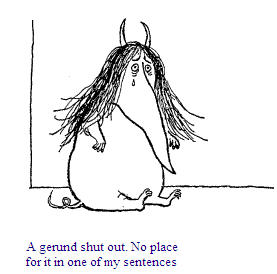My supervisors pointed out that, if I’m writing my thesis from a sociocultural perspective, I need to use the appropriate discourse.
I do start off doing this, and then I start to use synonyms to stop it getting bland and repetitive. But, of course, the synonyms aren’t exactly synonyms and, before I know it, I’ve wandered off towards a completely different metaphor for learning, in which ideas are things to be completed and transferred, rather than ongoing processes.
In order to help me pin my use of vocabulary down more successfully, they’ve set me to reading an article by Roger Säljö, specifically so that I can identify the appropriate sociocultural language. So the following are terms you can expect to see in my thesis 🙂
Appropriating concepts, appropriation, competence, conceptual constructions, conceptual framework, conceptual resources, constituting a phenomenon, cultural resources, discourses, discursive community, discursive nature of human knowledge, discursive patterns, discursive practices, dominant metaphor, enculturation, how individuals are positioned in relation to specific social practices, how individuals are able to identify the situationally appropriate referential meaning of a concept, how reality is constituted in social practices, linguistically mediated knowledge, linguistic tools, mediational means, mediated nature of human activity, paradigm, situatedness is fundamental, socialise, social practices, sociogenetic, transformation.
 If you look at the list of sociocultural terms I listed a couple of posts back, you’ll observe that they’re not words which you’d expect to hear in day-to-day conversation. They also prove to be difficult words to use in a thesis, and I’ve been struggling to use any of them in my current chapter.
If you look at the list of sociocultural terms I listed a couple of posts back, you’ll observe that they’re not words which you’d expect to hear in day-to-day conversation. They also prove to be difficult words to use in a thesis, and I’ve been struggling to use any of them in my current chapter.